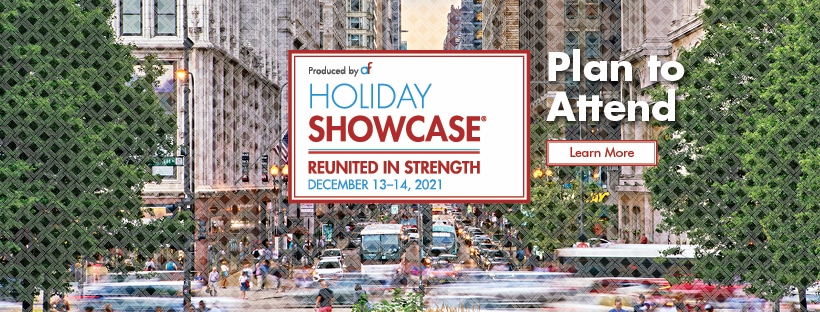How Focus Can Boost Engagement and Diminish Burnout

Curt Steinhorst says that your attention is your most finite resource. He coaches top founders, athletes, and executives, and speaks to audiences worldwide about mastering focus and attention — critical elements for businesses emerging from the pandemic and orienting themselves to a changed world. But it was his personal struggles with ADHD that led him to create his company Focuswise. He simply wanted to figure out why he was distracted all the time. Drawing on a background in research and communication, Steinhorst has been studying attention and focus for more than 10 years.
As the keynote speaker for Holiday Showcase, as well as our CEOnly Summit, Steinhorst sat down to tell us more about focus and how teams can create a culture that actually supports focused work. Following are 5 takeaways that emerged from our discussion.*
1. Focus should be viewed as cultural and organizational, not individual.
“You look at corporate America right now and you see incredible burnout. You see people feel inundated, overwhelmed, there’s too many meetings, there’s too many emails, there’s too much stuff and no one can stay on top of it. At the same time, disengagement is high.”
“It turns out that creating the environment that allows people to focus without interruption and actually have attention given to what they do creates huge gains in productivity and engagement. The problem is that for a long time, classic time management — which is what people think of when we say focus — was thought about as just an individual self-help thing. In fact, most of what aides people’s ability to focus and direct their attention at work is cultural and organizational.”
“Focuswise exists to help leaders unwind the hidden things that are driving people’s inability to get work done on an organizational level.”
“Distraction, at its core, is confusion about what matters.” – Curt Steinhorst, TEDx talk
Watch the full TEDx talk below:
2. Focus isn’t a fixed trait, and it can be cultivated.
We asked Steinhorst if focus was fixed and akin to a personality trait. Not exactly, he said: “there’s so many misunderstandings about this, like different people’s brains work differently when it comes to focus.”
“Rather than thinking of focus as something to white knuckle, I think of it as something that I can cultivate by focusing on the variables involved. This means I’m going to do my harder work in the morning because I get tired as the day goes on. So there are ways to increase our ability to focus rather than just grinding it out.”
“Tasks influence our ability to focus, but also our past experiences influence our beliefs around focus. If you have a diet of Tik Tok and Twitter all day long, you’re cultivating fragmented attention. If you unplugged for a few days and go on a vacation without your phone, your capacity for focus will actually grow. If you do 10 minutes of meditation a day, you can see dramatic improvements in your capacity to focus in as few as 10 days. Mindfulness is basically attention training — it’s redirecting your mind back to a neutral point.”
“Focus is constantly changing with the environment. Some people need a louder environment like a coffee shop, and some people need a really quiet environment. Time of day and energy level influence our ability to focus as well. I have three kids, so I’ve been woken up at night for years. It turns out my brain is operating in depletion and focus takes up a lot of energy from our brain. So, the more tired we are, the more we seek new stimulus. This may be why we endlessly scroll our phones— it’s like feeding our brains candy.”
3. COVID has shed some serious light on focus in the workplace.
“COVID was a game changer for the area of focus for a few reasons. For one, crisis has a focusing effect. When everything is up in the air and there’s significant risk, it’s actually much easier to say ‘I’ve got to get this work done.'”
“Two is that work-from-home eliminated so many of the things in offices that kept people from getting work done. It turns out when you free people from constant pop-ins and let them actually make decisions about the best ways and times that they get work done, productivity grows substantially. A decade’s worth of technology and leadership development couldn’t move the needle the way a pandemic did.”
“The optimist in me says that this is the ultimate evidence of letting people have the space and flexibility to create the environment they need to get their work done. My hope is that organizations will take notice and try to bring this out in future work.”
4. Your team can learn to focus together.
If you’re looking for more on cultivating focus in the workplace, you should first attend Holiday Showcase on Dec. 13 and 14. Steinhorst will be speaking both days. Beyond books and speaking, Steinhorst has developed a course for individuals, teams, entire companies — anyone interested in increasing focus. The challenge is called FocusFit: Your Analog Antidote for a Digitally Distracted World. Developed with Nike, this challenge helps individuals and teams eliminate chronic distractions, create space to focus, and pour their energy into the things that matter most. If you aren’t sure where you fall on the focus scale, you can take the FocusFit quiz for free. You’ll get a focus level score from 1-100 along with recommendations on how to help overcome distractions.
“I’m unashamedly proud of it,” Steinhorst says of the FocusFit Challenge. “You get a box that’s high quality and beautiful. It’s where you put your phone when you don’t want to have it out. Then it has a ‘do not disturb’ sign, a journal, and a deck of cards with tips. There are three rounds: clarity, expanding your capacity for focus, and cultivating curiosity. It’s meant to be fun.”
5. How to hack focus, the right way.
We held a speed round where we went through some productivity hacks and asked Steinhorst for his input. Here’s what he had to say:
Calendar Blocking
“If you aren’t tying your activities to your calendar, it’s a clear recipe for feeling like you lose every day. It’s really valuable to associate time with activities. Now, I think the problem with calendar blocking, and why it often is limited, is that we love to plan our days, but we don’t always love to do what we’ve planned. We have our whole calendar filled and blocked, but then we get there during the day and the moment comes and I don’t want to do what’s on my calendar.
Why is that? When I block my calendar, current Curt is exerting control over future Curt. But future Curt is going to become current Curt and current Curt doesn’t ever like some other person to tell him what to do. Know what I mean?
So I block off times in my calendar for certain categories of activities. I don’t know which one I’m going to do within the category, but this is how much total time it is going to take. Then then when I get to it, it gives me flexibility in the moment.”
Project Management Systems (Asana, Basecamp, Monday, Trello)
“For all project management systems, we need to remember that they are tools, not solutions. There’s no perfect system and they won’t fully solve the problem of organization, but they are super valuable in some ways. They should provide complete visibility of all that’s out there and then allow you to zoom into only what’s in a specific category. I think it’s really important for people to have a dashboard where they can see all that exists and what needs our attention. This strikes at the fear that we’re missing something and that can often derail our ability to focus.
Where it can go wrong is how much added work the system requires to maintain rather than the actual work being done within the system. We switched to Notion because we wanted all the work housed within the system. These project management systems fail when it’s a totally independent system of accounting for activities, but it has no bearing on the actual activities.”
Internal Communications Tools (Slack, Microsoft Teams)
“I always say Slack is crack. I get it, email sucks. So now we’re going to create another channel where the communication barriers are even lower. Now we have the same number of emails, but we have an infinitely higher number of messages within the organization about stuff that doesn’t matter and is possibly just an interruption.
Now, when used correctly and organized correctly, these can be super valuable. I think it’s really important to turn off notifications on channels that aren’t relevant. Microsoft Teams has a little red bubble that indicates you’re not available. Some people think that means ‘Ok, they aren’t available on Teams, I’ll have to find another route.’ I helped a client develop an internal campaign called ‘respect the red.’ It was a cultural move to respect people’s availability and use the technology to improve productivity, not hinder it.”
Personal Productivity Apps (To-doist, Evernote)
“Pick one you like and go all in on it. Technology is really wonderful because it allows us to capture things anytime we’re thinking of them and we have all these notes visually available. But there’s a hidden cost to them and that is if you’re in front of people and you pull out your phone, you’re rude. And also every time you pull out your phone there are 12 other apps you might go to instead.
So I go old school in terms of my management throughout the day and I have a note card I write on. I take notes for the day and then throw it away every day. Pads and notebook don’t work for me because I want to start every day fresh — I don’t want to waste time flipping through past notes.”
*Some quotes were edited for length and clarity.
Tags
Related Articles
Refill Your Cup: Summer Wellness Tips for Busy Professionals
Discover simple, effective ways to recharge this summer so you can show up as your...
Rewirement: A New Approach to Retirement
Retirement doesn’t have to mean stepping away—it can be a thrilling "rewirement" into a purpose-driven,...
Career Corner Roundup
Every single Career Corner article we published in 2024!





